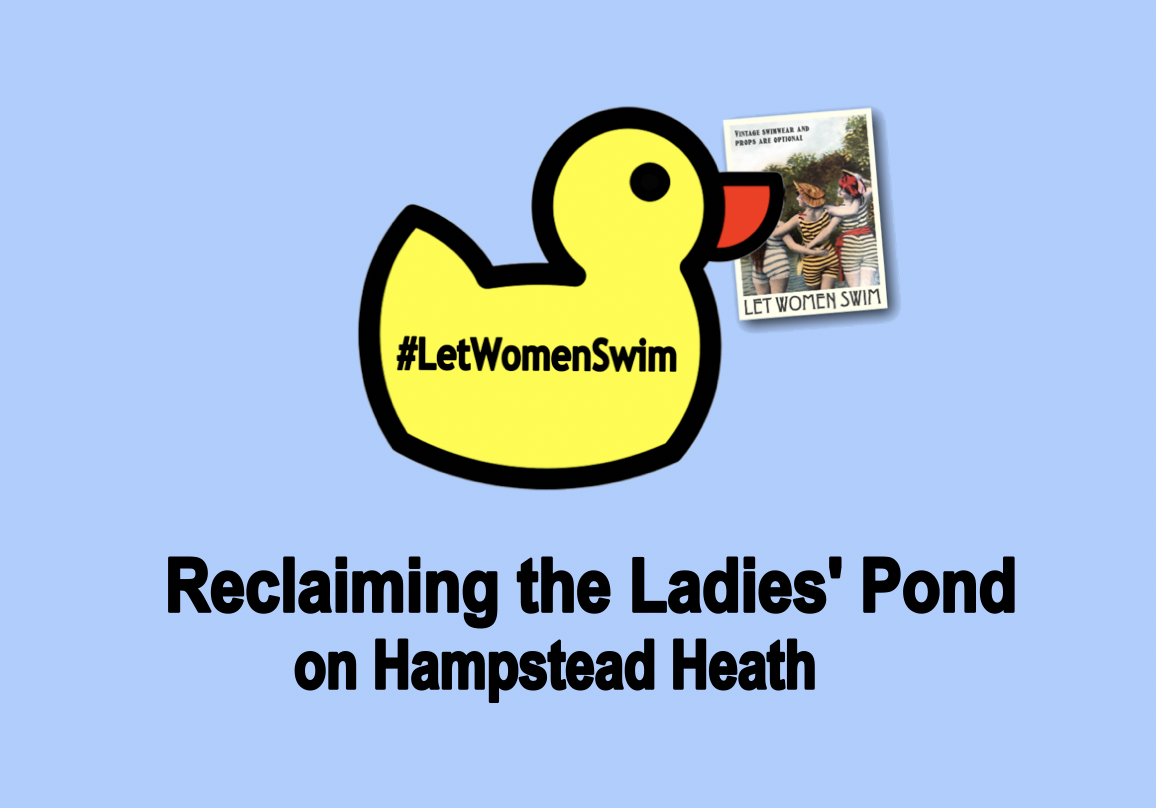 It was back in 2018 that Man Friday organised the first women’s protest at the ponds on Hampstead Heath. On that occassion a group of women chose to swim in the men’s pond in an attempt to draw attention to the absurdity of self-ID and the City of London’s new ‘trans inclusion’ policy concerning the use of the ponds. The men didn’t like it much- which rather proved our point about single sex spaces being desirable for both sexes- and pictures and videos of Amy in her neon-green mankini and other women sporting beards and swim trunks kept the press interested for a few days. You can read the piece I wrote about that sunny day, ‘Yes, but today is Monday’, here.
It was back in 2018 that Man Friday organised the first women’s protest at the ponds on Hampstead Heath. On that occassion a group of women chose to swim in the men’s pond in an attempt to draw attention to the absurdity of self-ID and the City of London’s new ‘trans inclusion’ policy concerning the use of the ponds. The men didn’t like it much- which rather proved our point about single sex spaces being desirable for both sexes- and pictures and videos of Amy in her neon-green mankini and other women sporting beards and swim trunks kept the press interested for a few days. You can read the piece I wrote about that sunny day, ‘Yes, but today is Monday’, here.
In 2019, Esther Freud observed in Vogue that “at the height of summer, as many as 2,000 women, of every shape and size, all classes, all ages, from across London, across the country, even from abroad, arrive to swim and sunbathe on the meadow.”
Fast forward another three years and Venice Allan decided to organise another protest, this time outside the gates of the Ladies’s Pond, with the aim of raising awareness about the current rules and having the pond declared a single-sex space again by 2025 – the hundredth anniversary of the founding of the women-only pond.
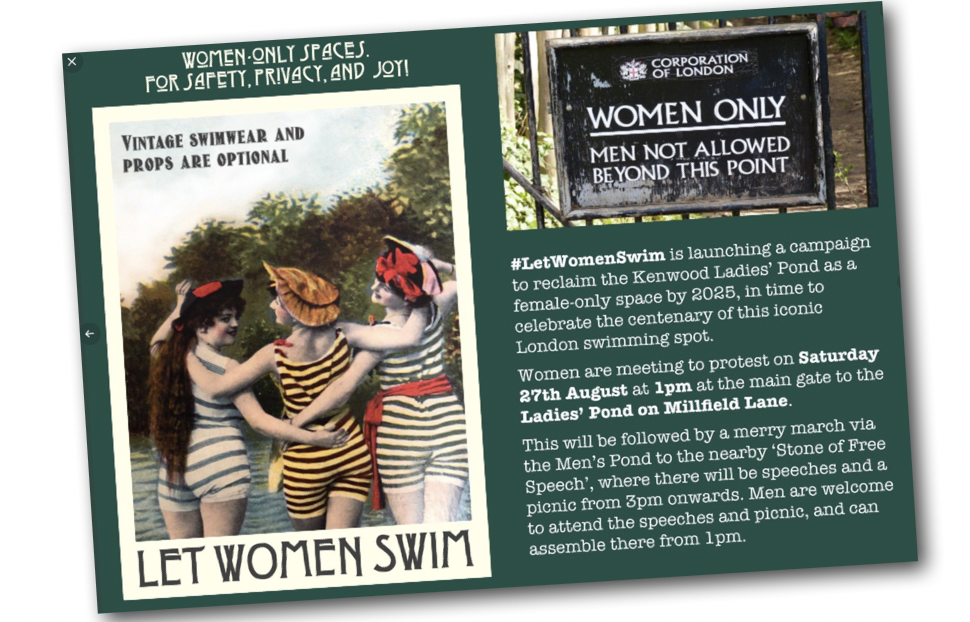
‘But wait,’ I hear you cry. ‘Surely the Ladies’s Pond is already a single sex space? After all, the sign on the gate says quite clearly ‘Women Only. Men not allowed beyond this point’.
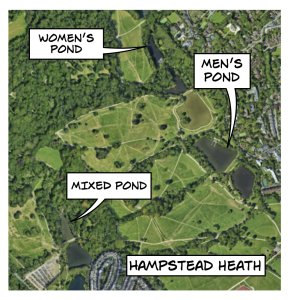 The second observation would be correct: the sign on the gate says exactly that, in large white letters on a black background. But the first observation is no longer true.
The second observation would be correct: the sign on the gate says exactly that, in large white letters on a black background. But the first observation is no longer true.
Although the Men’s Pond was opened in 1893, women were initially excluded. Then in 1902 ladies were allowed to swim- but only on Wednesdays. In 1911 a ‘Ladies Graceful Diving’ competition was held. In 1925, women got their own pond at last. Hampstead Heath now has a Men’s Pond, a Ladies Pond and a mixed-sex swimming area.
Something for everyone, you might think. But where’s the validation in that?
The Ladies’ Pond provides a space where women can feel free from the male gaze. For many women who visit the pond, religion or culture may stipulate that they may only swim in a single-sex space. Women may have many other reasons for wanting a single-sex space: from body issues to feelings of safety. When it really comes down to it, women should not need to list a host of reasons why they have the right to a space where they can be unclothed, away from men.
“The ponds have always had a strong element of support from Orthodox Jewish women because it is a place where modesty can be maintained,” reported the Telegraph in 2020. A lawyer called Julia told the paper “The pond can support you through crises. It helped me with the death of my parents. And with menopause, all the mood changes.”
65% of those responding to the City of London 2021 Pond Questionnaire were female (or said they were) and the most popular reason ticked for swimming was ‘for my mental wellbeing’.
Women can join the Kenwood Ladies Pond Association for just £5 a year (swimming is extra).
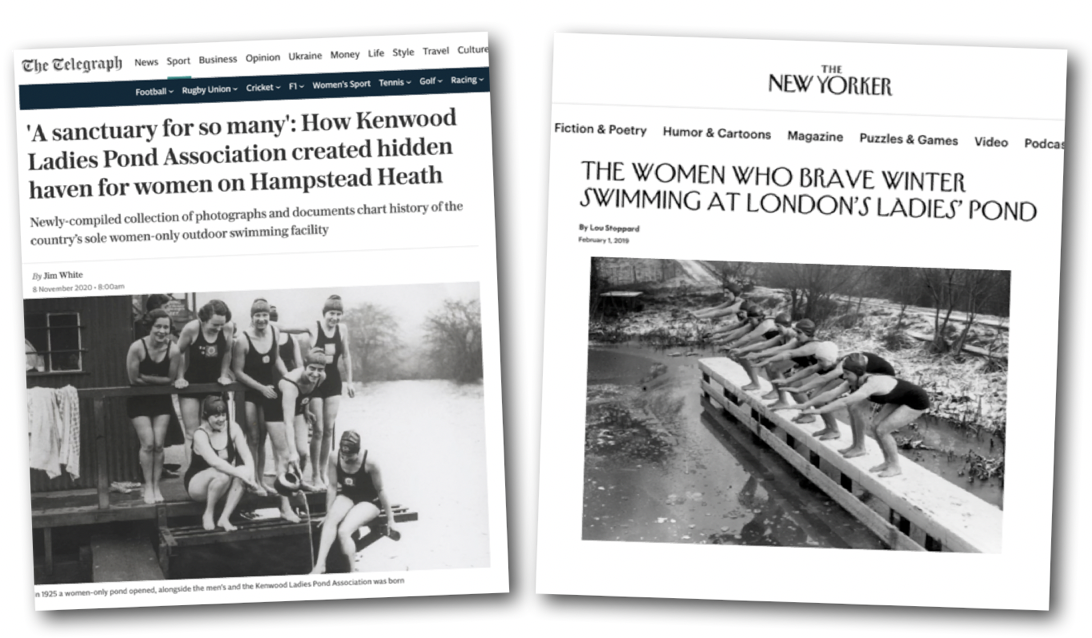
Until recently, men were not allowed to swim in the women’s pond. In 2017-18 lifeguards, managers and the swimming associations that use the ponds, underwent ‘transgender awareness training’. The result? Towards the end of 2017, the City of London Corporation decided that men who ‘identify as’ women should be allowed to use both the Ladies’ Pond and the female changing rooms.

This attitude may be inclusive for the small number of men selfish and audacious enough to take advantage of the decision, but for many women it puts an end to a space where they could feel comfortable and relaxed. Many Muslim women, for example, will not swim in a pond or pool when men are present. Many women who are self conscious about their bodies or who do not wish to be in a state of undress around men may choose to stop swimming altogether. For some, this may not even be a choice.
The plan was to meet at the gates of the Ladies’ Pond at 1pm. Quite a few people had arrived early which was good news for Holly and I who were blithely wandering in the wrong direction, talking about our cats, when luckily we spotted some familiar faces.
Once most of us were gathered- somebody counted 120 of us, another woman told me later she had counted 130- we lined up against the railings that ran alongside the pond and spread out our placards and banners, being careful not to obstruct the path.
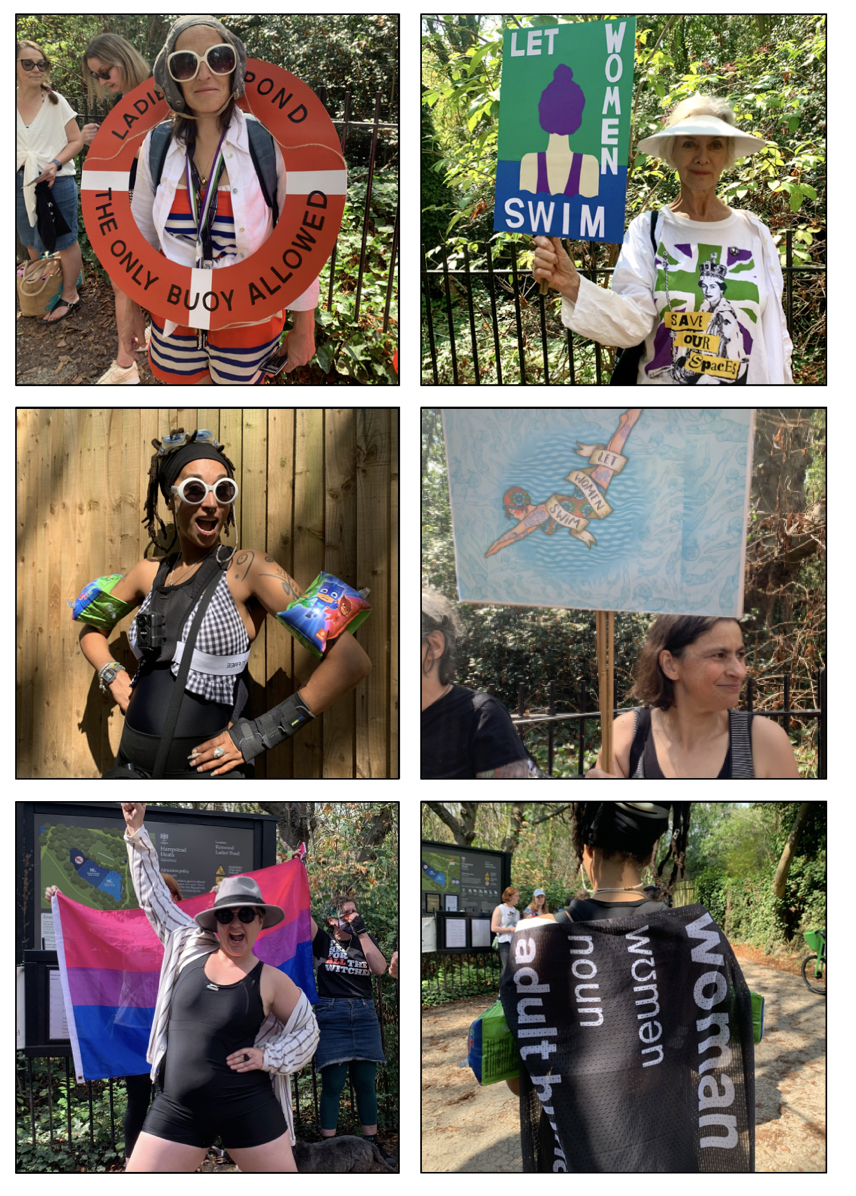
Some women were in costume, others wore swimsuits or armbands. A couple had emblazoned Let Women Swim onto their towels. A few women started up a chorus of ‘If A Person has a Penis’ but I don’t think Julia Long had got there yet as the third verse was missing. The chants moved on to ‘Stand Up for Women especially when they’re swimming’ which scanned beautifully and made a great rhyme but I couldn’t help feeling that the ‘especially’ was a bit superfluous from a semantic point of view.
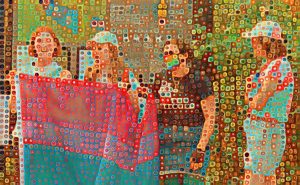
“We’re here, we’re doing the work of the patriarchy, get used to it”
Around this point, the TRAs turned up, or maybe they had been there all along and I just hadn’t noticed. There were maybe half a dozen of them, a couple of young men but mostly women. I recognised one of the young men from a Reformers Tree meeting. Clutching a bisexual flag and sporting trans colours, this most marginalised group turned up with their lunch in a Wild Country Organics plastic bag and the eager zeal of neophytes with a cause. After a while they began to chant “We’re here, we’re queer, get used to it”. As if we weren’t. Used to it.
Some of us danced around a little nearby, and a few chanted ‘transwomen are men’ back at them, but there seemed little point. The classic moment was when they started shouting ‘we won’t engage with you’. 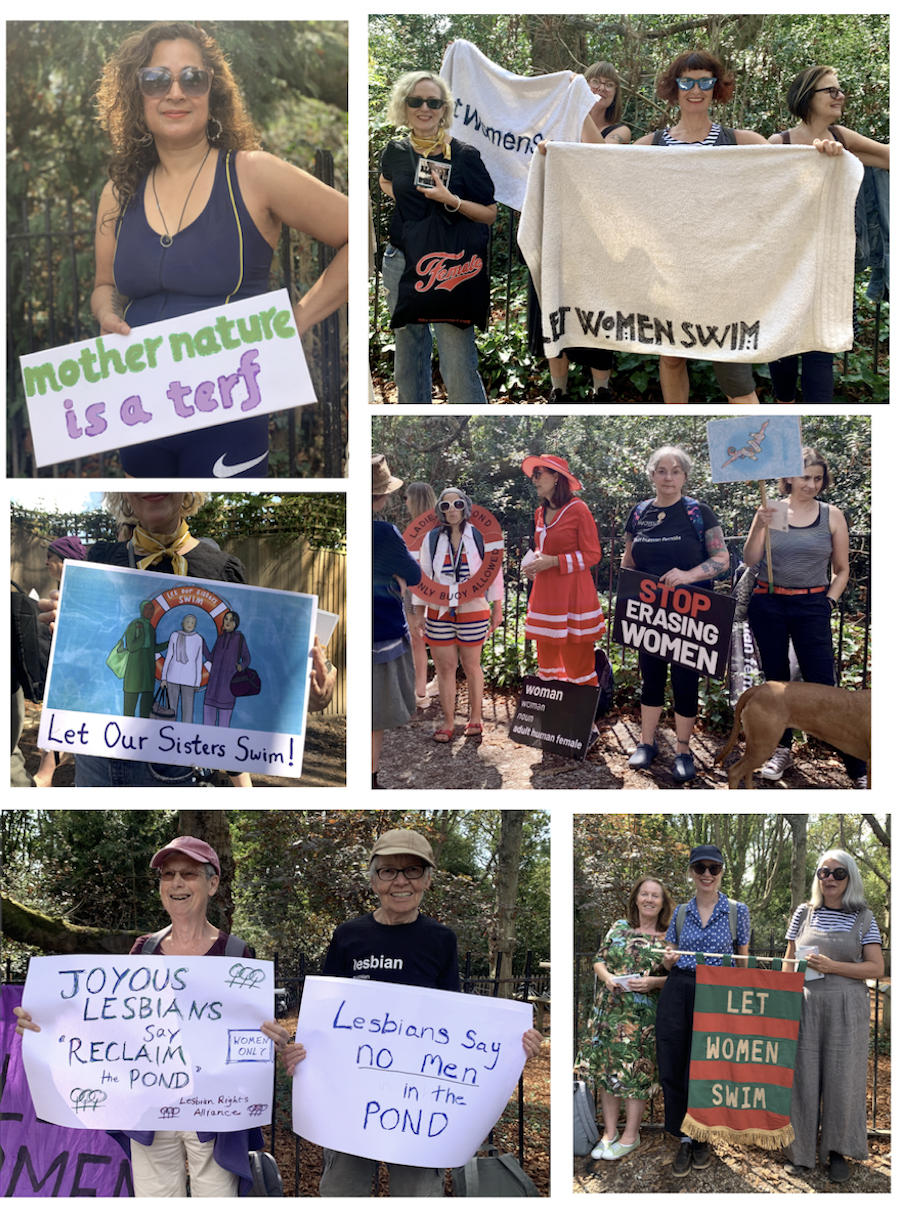
One woman had stitched a beautiful ‘Let Women Swim’ banner in green, russet and gold cotton. Others had handwritten signs, or had them printed up professionally. Some had made them with acrylic paints. A couple of women had ‘Let Women Swim’ bathtowels. Two women held paper signs saying “Joyous lesbians say ‘reclaim the pond'” and “Lesbians say ‘no men in the pond'”.
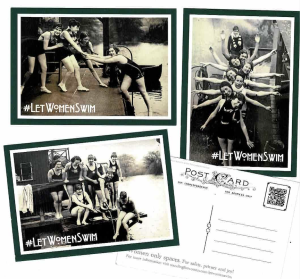 Some women sang and danced around or waved flags or handed out postcards to passers by. One couple gave theirs back saying ‘we don’t want them’. Many of those out for a stroll were curious about the reason behind the protest. l could see and hear conversations going on around me; several people were nodding, agreeing with the idea that single-sex spaces were essential or surprised to discover that all a man had to do to gain access to the Ladies’ Pond was to declare himself a woman. One young woman shouted ‘You’re disgusting’ and gave us the finger as she walked past.
Some women sang and danced around or waved flags or handed out postcards to passers by. One couple gave theirs back saying ‘we don’t want them’. Many of those out for a stroll were curious about the reason behind the protest. l could see and hear conversations going on around me; several people were nodding, agreeing with the idea that single-sex spaces were essential or surprised to discover that all a man had to do to gain access to the Ladies’ Pond was to declare himself a woman. One young woman shouted ‘You’re disgusting’ and gave us the finger as she walked past.
After about an hour of standing outside the Ladies’ Pond it was time to begin the walk to the Stone of Free Speech at Parliament Square. Yes, the Stone of Free Speech is ‘a thing’!
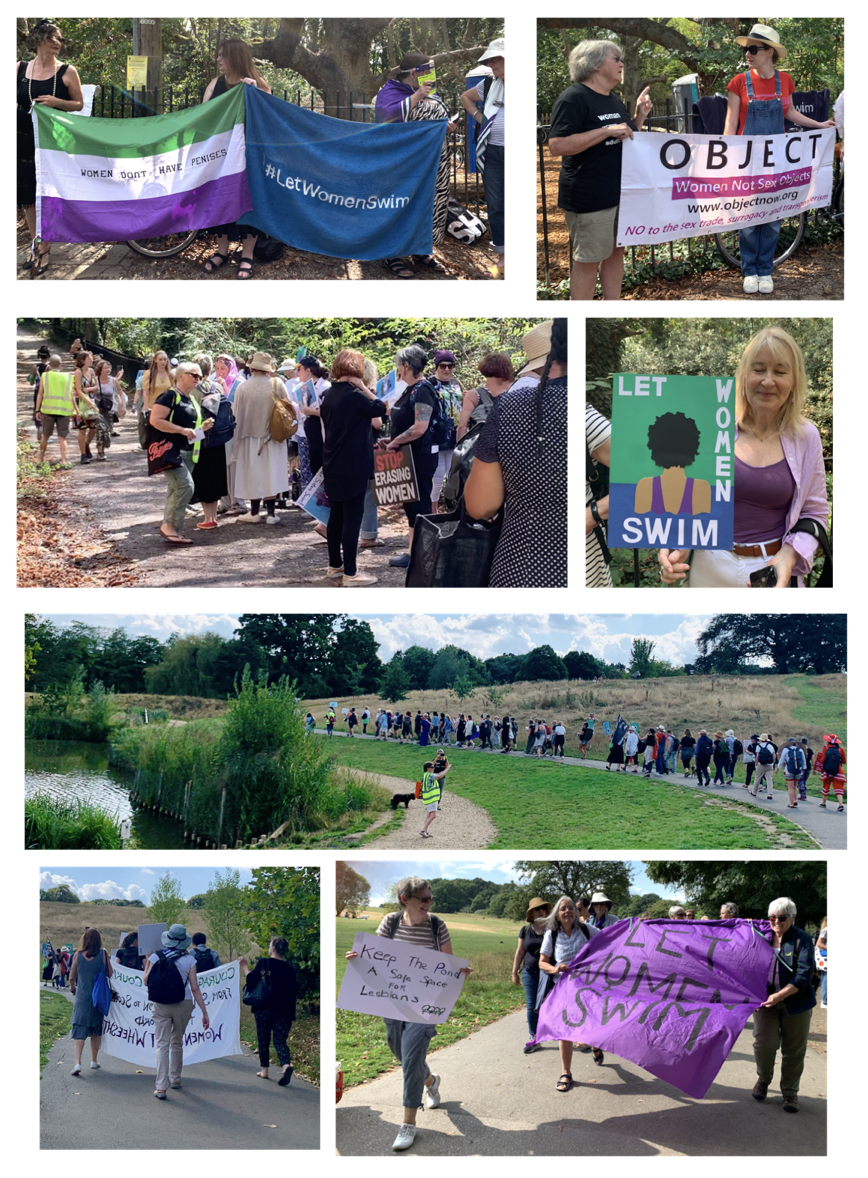
It was a hot afternoon and the walk was a little longer than some had anticipated. The Stone of Free Speech stands on Parliament Hill, on a bluff in full sun. The umbrella I’d packed, because Siri had decided there would be a slight chance of rain, helped provide a little shade as we spread out blankets and shared our food. It was a leisurely time as women chatted, caught up and discussed forthcoming plans. Several men joined us for the lunch and speeches.

Kellie-Jay spoke first, welcoming us to the Stone of Free Speech and thanking Venice and the other women who had co-ordinated the afternoon. She referenced Sheila Jeffreys in speaking of men ‘parasitically invading every last space that we’ve carved out’ and noted how such men could be found lurking in menopause groups, and even still-birth facebook groups, looking for validation. The small group of female TRA protestors outside the pond, she said, did not realise that they were doing the work of men’s rights activism, adding that it is our duty to speak out against the trasnsitioning of children and to point out that they are being gaslit.
She observed that ‘a certain 2-bit channel 5 News presenter’ would have been breaking the law had they taken a selfie at the Ladies Pond – as India Willoughby had boasted of doing the morning of our protest.
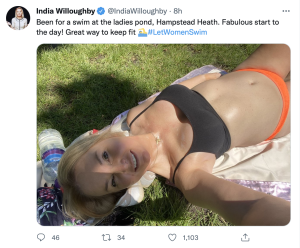
I had not seen the tweet when Posie referenced it, I found it later when I got in. Yup, there he lies, mocking women like Catherine, who cannot swim in mixed ponds because of her religion, like Sarah, who won’t swim around men because of her mastectomy, like Karrie, who doesn’t want to swim around men after being sexually assaulted in the sea. The rights of these women mean nothing to men like this.
In Kellie-Jay’s words: “The Ladies Pond is really symbolic because they thought ‘there’s a men’s pond, there’s a mixed pond, but no that’s not good enough for me, the validation is only in the Ladies Pond’ and so that’s where they want to go.”

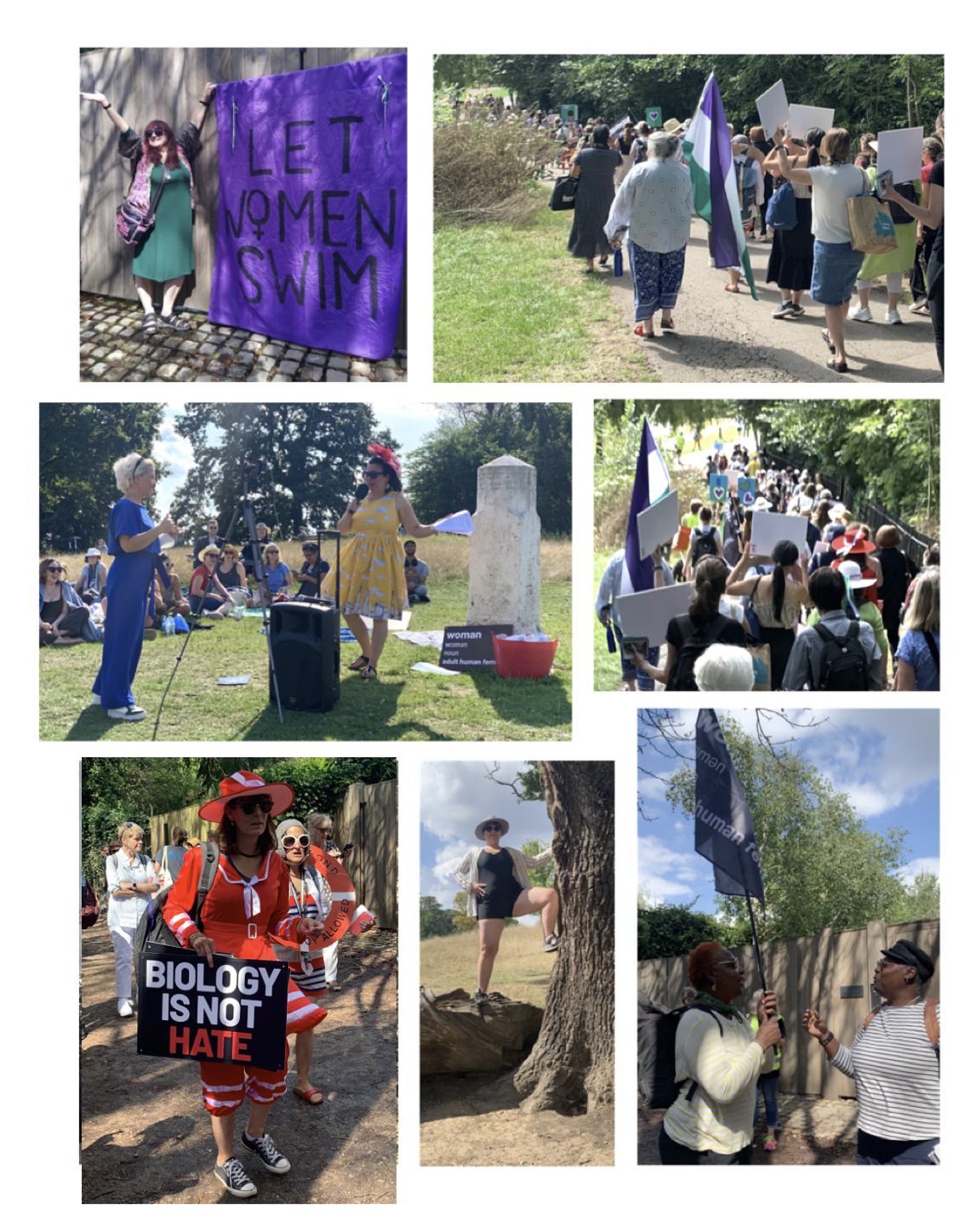
Catherine from Let Our Sisters Swim (LOSS) spoke passionately about the importance of female spaces and how she remembered visiting the Ladies Pond with her mother as a small child.
 “I remember how going through that gate felt: like entering a magical secret garden and how special it felt that it was just for girls and grown up ladies. I would love to pass that experience on to my daughters but as Muslims we are excluded by the City of London’s corporation so-called inclusion policy.”
“I remember how going through that gate felt: like entering a magical secret garden and how special it felt that it was just for girls and grown up ladies. I would love to pass that experience on to my daughters but as Muslims we are excluded by the City of London’s corporation so-called inclusion policy.”
Follow Let Our Sisters Swim, a newly established organisation, here, on Twitter @Swimming4Women
Catherine pointed out that the sign on the gate of the women’s pond leads women to believe that they are entering a single-sex space and thus exposes them to male bodies without consent. Muslim women, she told us, are 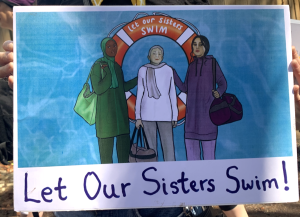 far less likely to be involved in sports, or even to be able to swim at all: one survey suggested that only one in four can swim a length of a swimming pool. If sporting opportunities are to be made available to them, it is essential that it is in spaces where they can be certain no men are present.
far less likely to be involved in sports, or even to be able to swim at all: one survey suggested that only one in four can swim a length of a swimming pool. If sporting opportunities are to be made available to them, it is essential that it is in spaces where they can be certain no men are present.
You can read Catherine’s article ‘Trans inclusion means Muslim exclusion’ here. As she says in the article “the implications for Muslim women who will increasingly be forced to self-exclude from sports and exercise and even domestic violence shelters are far reaching.”
You can sign the petition asking the UK Government to require swimming venues to maintain single-sex or private changing facilities here.
We had taken a long time over lunch and I was unable to stay to hear the rest of the speakers, which was a great disappointment for me as Julia Long and Sheila Jeffreys were on the list, as well as Karina from Fair Cop, Janice from Object, and Aja. As there had been transmission problems, the rest of the speeches were not going to be recorded by the cameras and so won’t be available on Posie’s YouTube channel. It was doubly disappointing to know I’d be unlikely to be able to catch up with them later. Maya was about to speak, but I had to pack up my stuff and go. As I wandered down the hill, she was telling the group how her preferred name for the Stione of Free Speech was the Giant Tampon.

I also missed Aja reading her latest poem, but luckily Venice recorded that and you can listen to it here on Twitter.
“This is a fight we absolutely will win,” she concludes, “now let’s say it together LET WOMEN SWIM!”

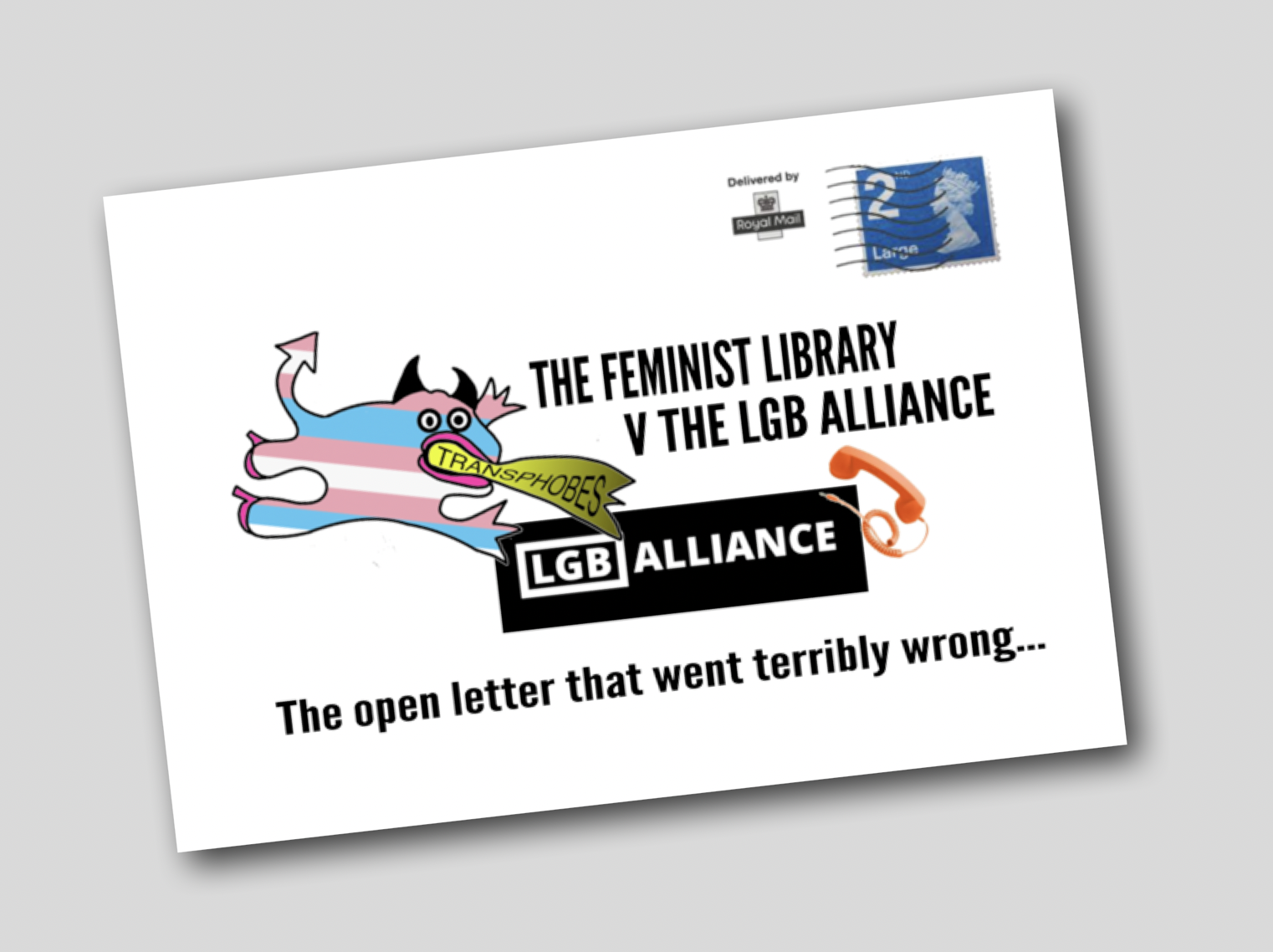 Oh dear,
Oh dear, 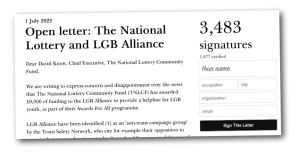 The latest ‘we hate women really’ piece of activism coming from the Feminist Library is to attempt to get the recent £9,000 Lottery funding given to the
The latest ‘we hate women really’ piece of activism coming from the Feminist Library is to attempt to get the recent £9,000 Lottery funding given to the 
 On the
On the 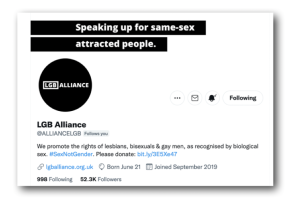 The LGB Alliance expresses concerns that gay children are being transitioned into ostensibly ‘straight’ children and aims “to protect children from harmful, unscientific ideologies that may lead them to believe either their personality or their body is in need of changing…
The LGB Alliance expresses concerns that gay children are being transitioned into ostensibly ‘straight’ children and aims “to protect children from harmful, unscientific ideologies that may lead them to believe either their personality or their body is in need of changing… 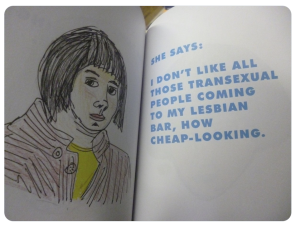 In 2018, middle child and I visited the Feminist Library Christmas Fair.
In 2018, middle child and I visited the Feminist Library Christmas Fair.